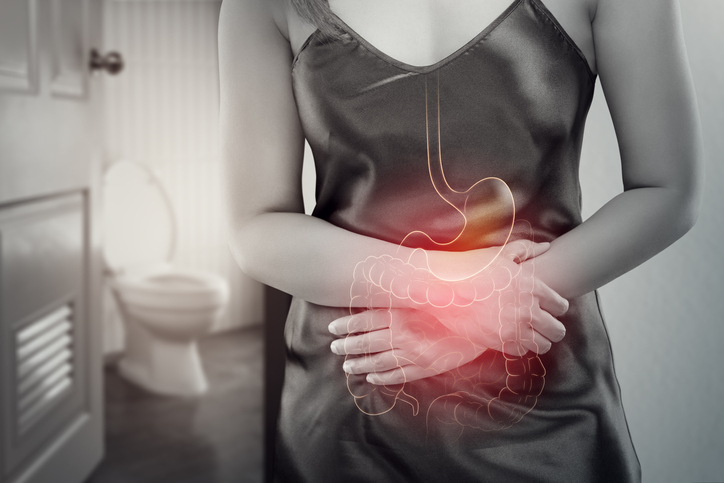Pain
Narcotic Bowel Syndrome (NBS) and Opioid-Induced Constipation (OIC)

An estimated 40 to 90 percent of people with chronic pain receive opioids for pain management. However, gastrointestinal complications, such as narcotic bowel syndrome (NBS) and opioid-induced constipation (OIC), can occur due to opioid medications, such as oxycodone, hydrocodone and codeine. Constipation involves infrequent bowel movements, usually fewer than three per week.
Narcotic bowel syndrome
Narcotic bowel syndrome is chronic, abdominal pain that worsens with opioid use. It is linked to the central nervous system. NBS can occur with no prior gastrointestinal issues after receiving high doses of opioids. The increased dosage of narcotics causes contradictory worsening of abdominal pain as people intake them to decrease pain in other areas.
Opioid-induced constipation
Opioid-induced constipation is the most common gastrointestinal side effect of taking opioids. The intestines are designed for muscles to squeeze and release as food passes from the stomach through the intestines.
There are several ways that opioids cause constipation, and the usual over-the-counter treatment may help very little or may not help at all. OIC is unlike constipation resulting from a person eating the wrong food, lacking enough fiber in their diet, or failing to drink enough water. In fact, the gut does not typically become accustomed to opioids and their side effects. Normally, constipation only worsens as long as opioids are being consumed.
How opioids cause constipation
Opioids work to block pain signals by attaching to receptors in the nervous system. Some of these receptors are found in the gastrointestinal tract. When opioids attach to these receptors, bowel function is slowed, causing constipation or worsening existing constipation.
Sphincters are muscles that separate one part of the bowels from another, such as the small and large intestines. When the sphincters open, stool passes through. Opioids tighten these muscles, which results in them opening very little or not opening at all.
The intestines also naturally absorb some water from the stool as it passes through, but when the time frame slows down the passage of the stool, it allows the intestines to absorb extra water. This produces a dry and hard stool. All of these things can work together or separately to cause OIC.
Symptoms of opioid-induced constipation
Opioid-induced constipation could eventually cause complete bowel blockage, which is extremely dangerous. Symptoms of OIC include, but are not limited to, the following:
- Reduced urge to have a bowel movement
- Less than three bowel movements per week
- Increased need to push or strain during a bowel movement
- Sensation of anorectal obstruction
- Feeling of not being able to empty the intestines
- Hard, dry or small stool
- Stomach pain
- Protrusion or cramping in the abdominal area
- GERD
What to do if NBS or OIC is suspected
Contact a health care professional if NBS or OIC is suspected. If an individual has just started to take opioids for chronic pain, be sure to discuss ways to avoid constipation with the physician.
Diagnosis
A health care professional will obtain a full medical history and perform a physical examination. Bowel movement patterns prior to taking opioids versus how they are at the time of the appointment should be discussed. Other causes of constipation should be evaluated and ruled out.
Outlook
It is possible that once the cause of constipation is determined to be due to opioid intake, a person may have to stay on laxatives as long as they continue to take the opioids. There are other treatment options for OIC. The use of prophylactic anti-constipation agents is the current standard of care.
















